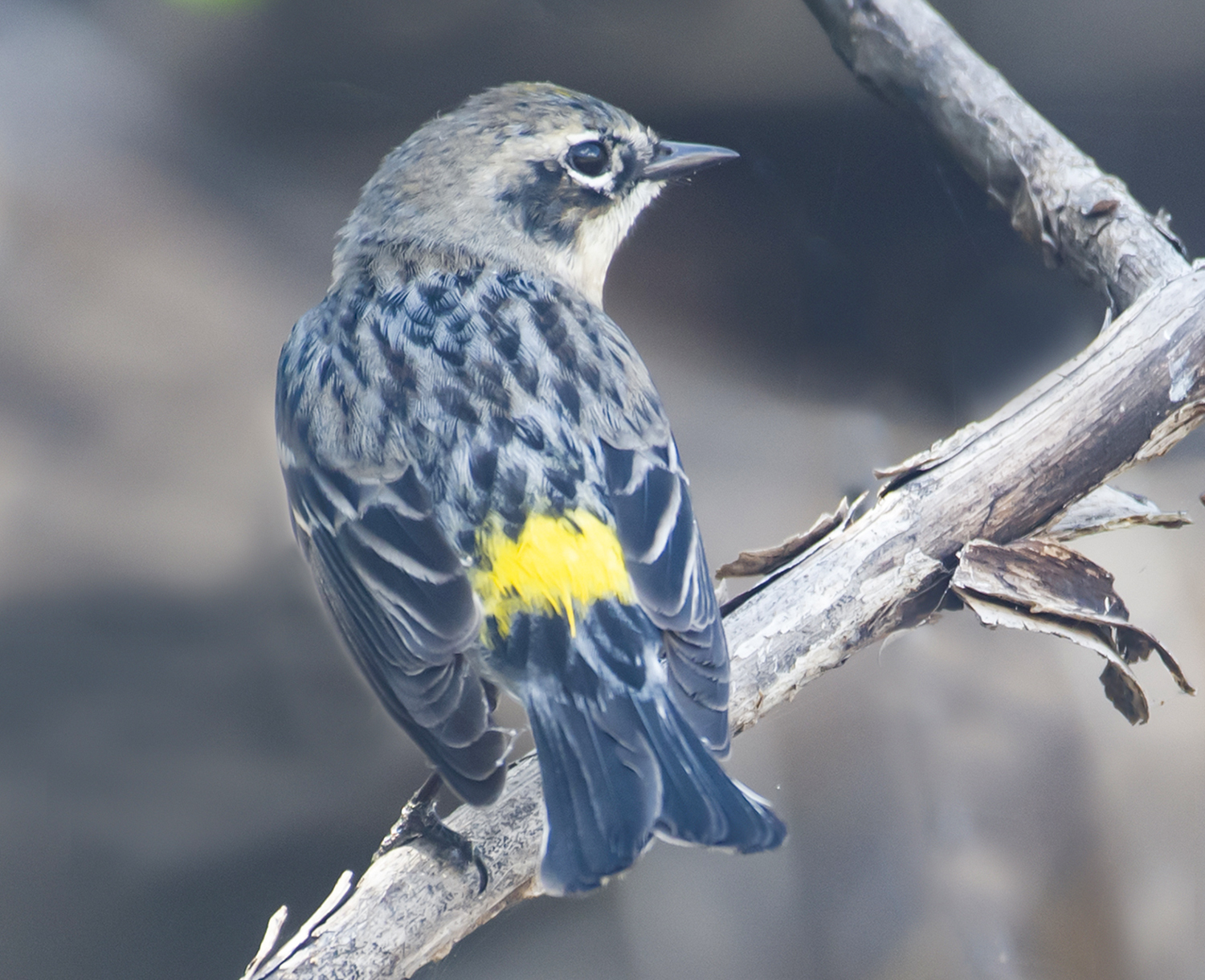
I am wondering if they will make it as far as the Virgin Islands this season.
Last year I saw quite a few of them migrating through New York in late October, and then soon afterwards I thought I saw one flitting around the sugar bowl on St. John. But then I realized it was one of the resident Bananaquits, which are about the same size.
You don’t often see Bananaquits showing their flashy yellow backsides, because their wings close over their butts when they sit down. But wow, when one flies up with its back toward you, there it is, so don’t get confused by them.
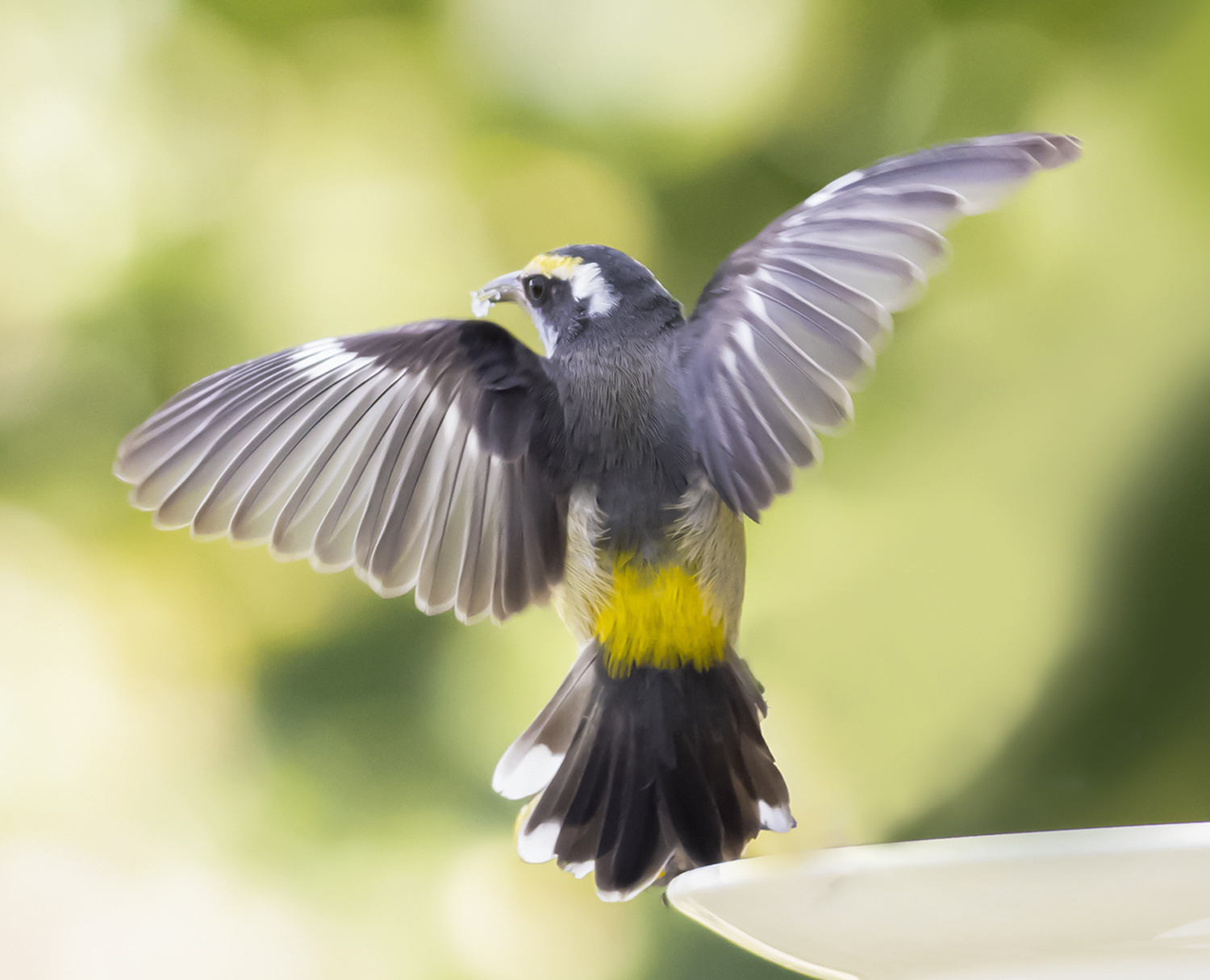
During the summer, the Yellow-rumped Warblers breed in Canada and down into New England. Then in the fall they start to migrate further south. They tend to leave their summer places later than other warblers, often in October, and then they go back north again as early as March or April.
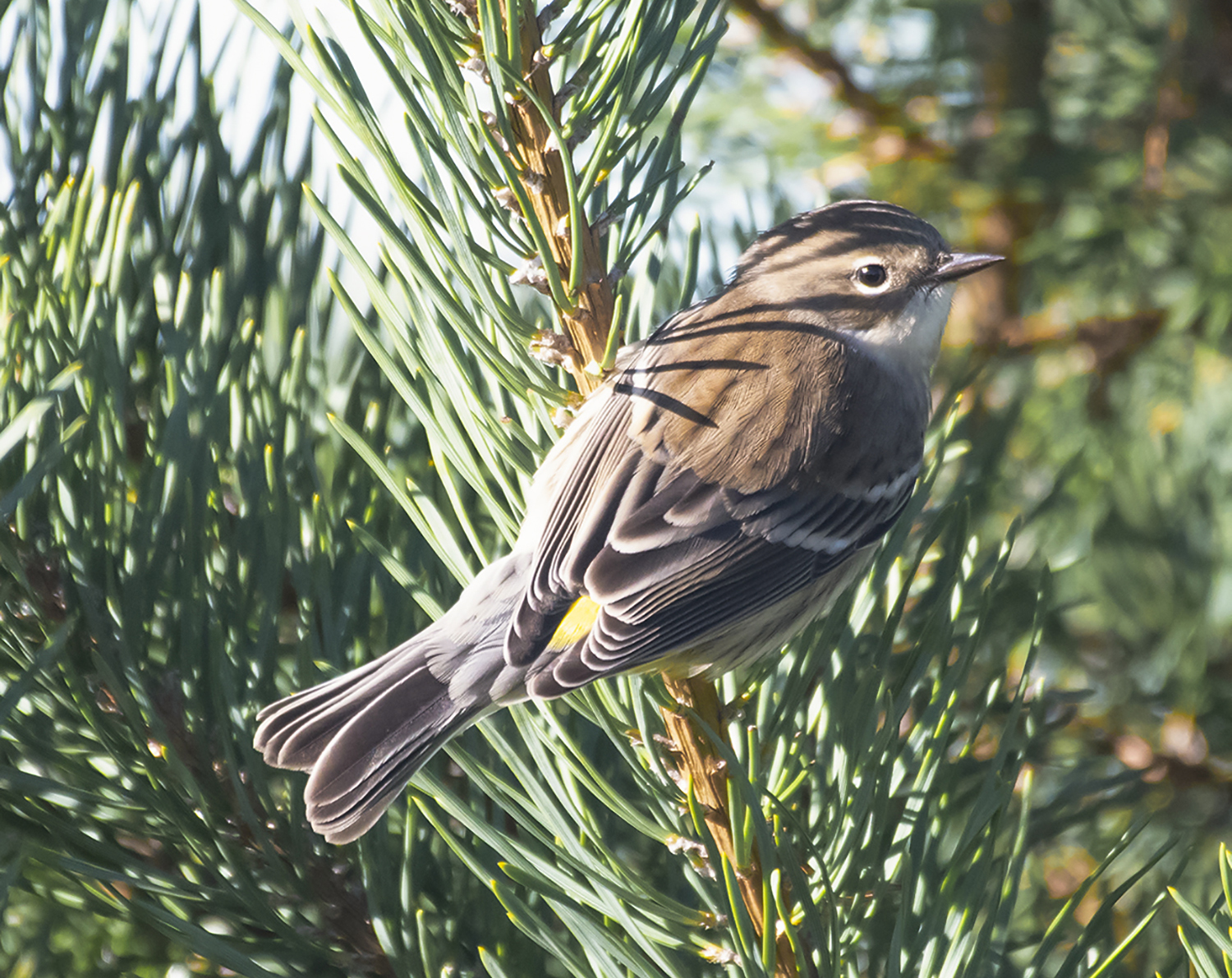
Members of the subspecies of the Yellow-rumped Warblers on the east coast of the US are called Myrtles, and those are the ones that show up in the Caribbean. But some of them just stay along the east coast for the winter, not even going very far south.
In the Virgin Islands, they are ‘irruptive’ – usually rare but then some years showing up in a big bunch.
It seems a bit of a mystery why some of them stay in the states, while others come down to the Caribbean, and then occasionally keep traveling this far. Winter migration is mostly about food, not warm weather, so it might be because some years there is not enough food in certain areas, or perhaps there are too many birds clustered somewhere along the pathway and so the later arrivals just keep on going.
Like most warblers, they primarily eat lots of insects. Not sugar, so they will not come to the sugar bowl. During the spring and summer, they forage on the ground, and in trees, and also grab bugs out of the air.
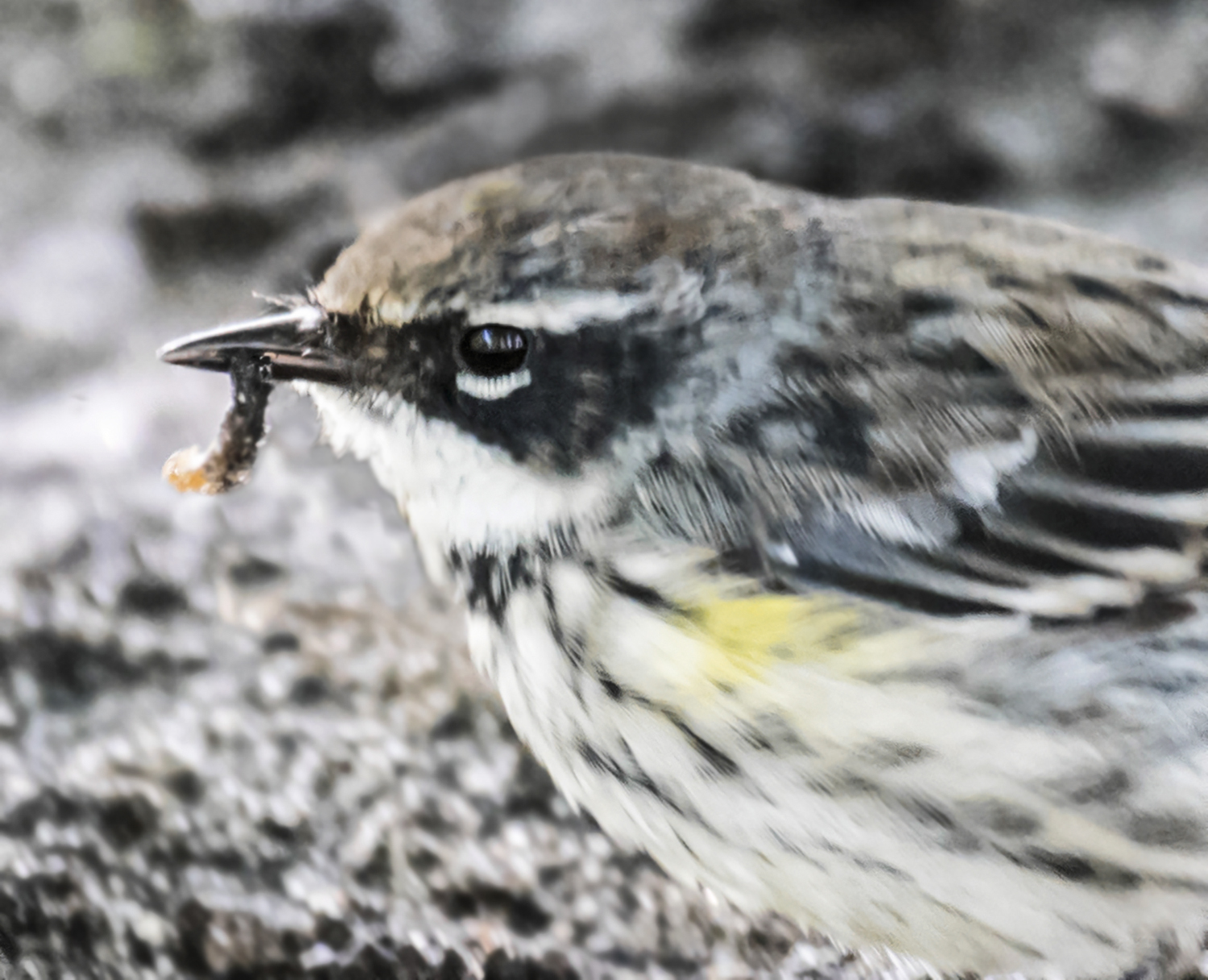
But Yellow-rumped Warblers are more versatile than many other warblers. They can digest berries too, and that allows them to spend the winter in cooler areas that have winter berries, even after the insects get scarce.
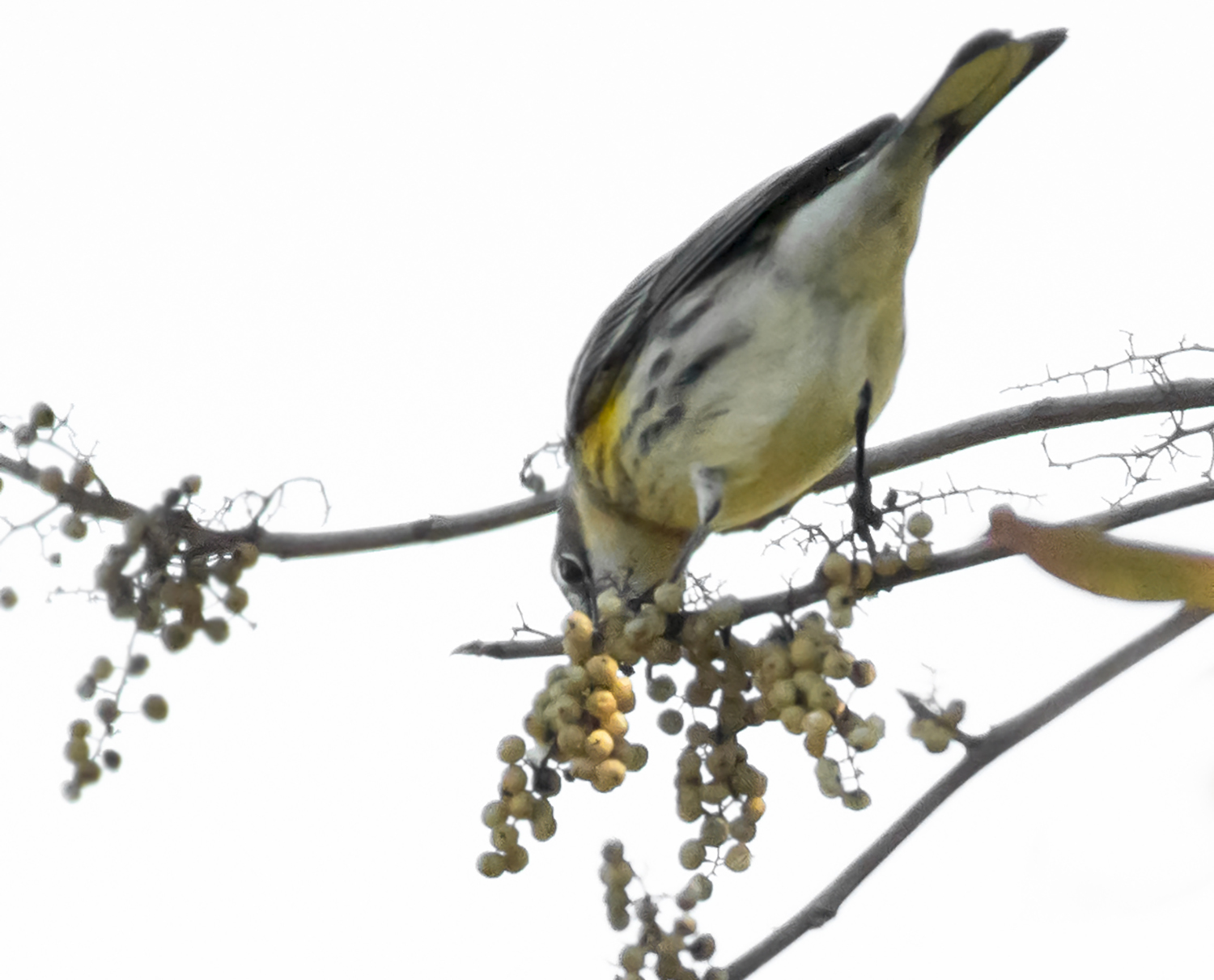
A few years ago I did actually see a large flock of Yellow-rumped Warblers on St. John, in the mangrove wetlands near Annaberg. They were creeping around on a stand of dead trees and seemed to be picking through the spider webs, eating trapped insects and maybe the spiders too.
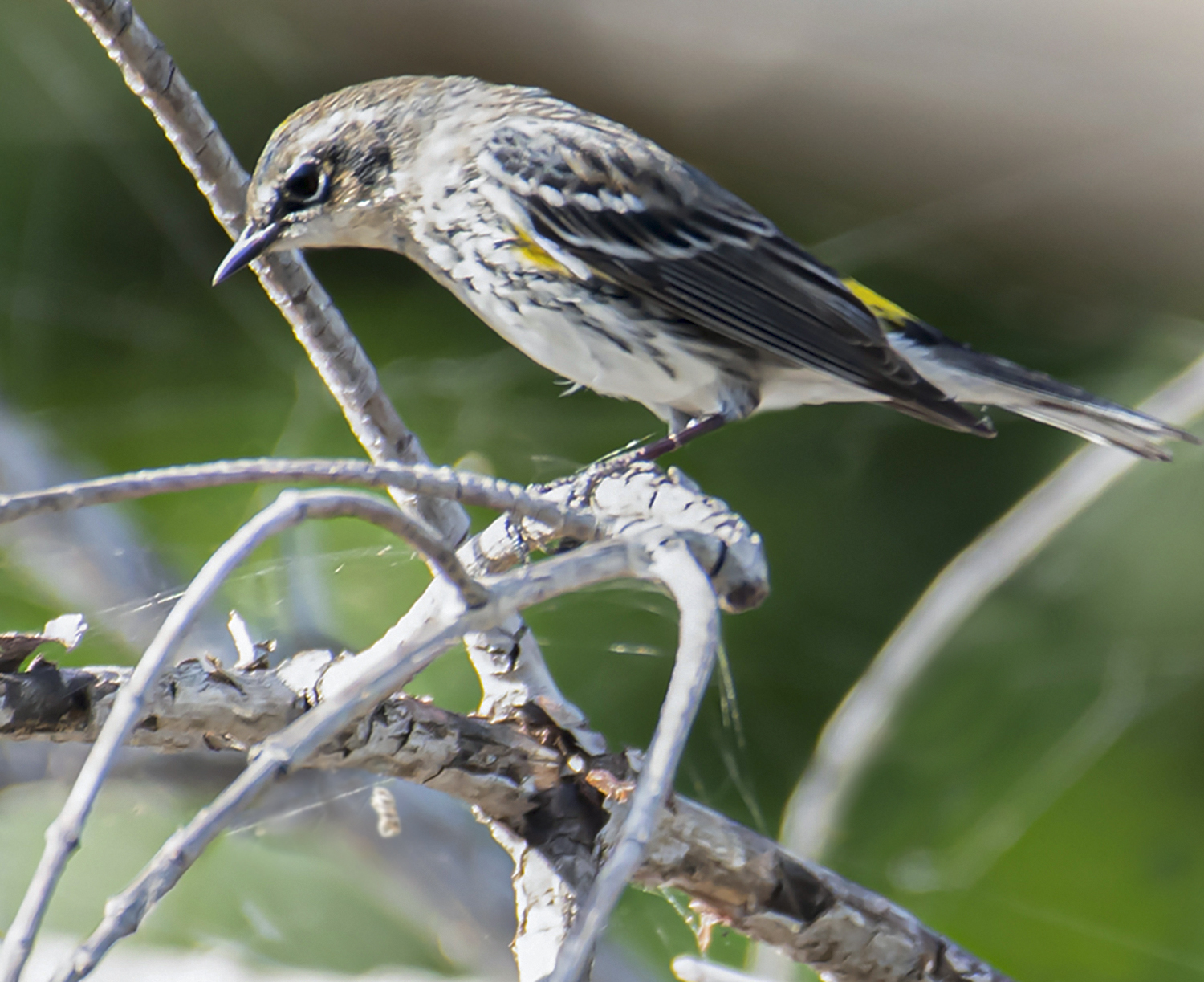
Often called “butter butts” by birders, these are among the most common and widespread warblers in North America. Their numbers have not been decreasing, unlike some other types of migratory birds.
However, there was an incident in Chicago recently where many of them died, along with other warblers, when they collided with a building. Most warblers migrate at night, and can become disoriented by brightly-lit buildings. They sometimes also get confused when they are looking for food during the day and fly into glass windows that reflect trees, which knocks them out. That is why people in many areas along the migratory bird routes are currently pushing for legislation requiring buildings to adopt bird-protective measures.
It is possible that only a few Yellow-rumped Warblers will get down here this winter, but I’ll be keeping a lookout for them. And let me know if you see any.
____________________________________________
Gail Karlsson is an environmental lawyer, writer and photographer. She is the author of two books about the Virgin Islands – The Wild Life in an Island House, and the guide book Learning About Trees and Plants – A Project of the Unitarian Universalist Fellowship of St. John. She has also recently published A Birds’ Guide to The Battery and New York Harbor. Follow her on Instagram @gailkarlsson and gvkarlsson.blogspot.com.


